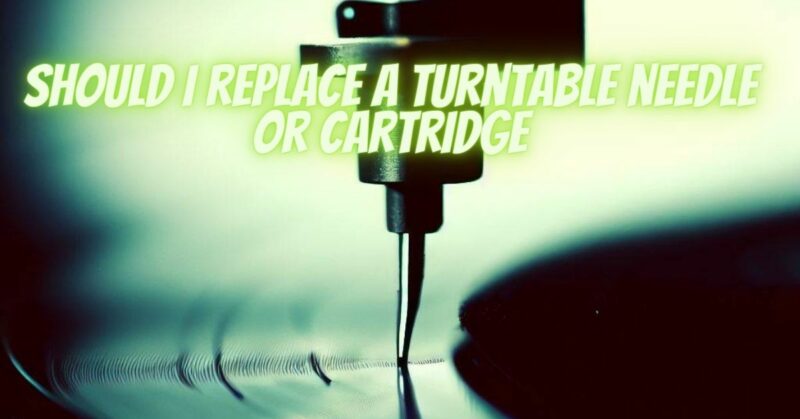If you’re an avid vinyl enthusiast, you understand the significance of maintaining your turntable to ensure optimal audio quality. Two crucial components of a turntable that directly affect sound quality are the needle (stylus) and the cartridge. Over time, these components wear out, which leads to the important question: Should you replace the turntable needle, the cartridge, or both? In this article, we’ll explore the factors to consider when making this decision and provide guidance on when and why you should replace these critical parts of your turntable.
The Role of the Turntable Needle and Cartridge:
- Turntable Needle (Stylus): The needle, also known as the stylus, is the tiny, diamond-tipped component that makes direct contact with the grooves of your vinyl records. Its role is to read the grooves and translate the analog information into audio signals that your amplification system amplifies and plays through your speakers.
- Cartridge: The cartridge houses the stylus and contains the necessary electrical components to convert mechanical vibrations from the stylus into an electrical signal. Cartridges vary in design, quality, and compatibility with different turntables.
When to Replace the Turntable Needle (Stylus):
The lifespan of a turntable needle largely depends on usage and maintenance. Signs that it’s time to replace the stylus include:
- Audible Degradation: If you notice a significant reduction in sound quality, such as distortion, muffled or harsh sound, or skipping, it may be due to a worn-out stylus.
- Visible Wear: Inspect the stylus under a magnifying glass. If you see visible signs of wear, chipping, or damage to the diamond tip, it’s time for a replacement.
- Frequency of Use: The more frequently you use your turntable, the sooner the stylus may need replacing. High usage leads to faster wear and tear.
- Tracking Force Issues: If your stylus is not properly tracking the grooves or you’re having difficulty setting the tracking force correctly, it may indicate a worn stylus.
When to Replace the Turntable Cartridge:
Replacing the cartridge is less frequent than replacing the stylus, but there are instances when it’s necessary:
- Incompatibility: If you’ve upgraded your turntable or made significant changes to your setup, you may need to replace the cartridge to ensure compatibility and optimal sound quality.
- Improvement in Sound Quality: If you’ve invested in a higher-quality cartridge, you can expect an improvement in sound quality. Replacing the cartridge allows you to maximize the potential of your setup.
- Wear and Tear: Cartridges have a longer lifespan than styli, but they still experience wear and tear over time. If you notice a decline in sound quality that can’t be resolved by a stylus replacement, it might be time to consider a new cartridge.
- Damage: Physical damage to the cartridge or the tonearm can necessitate replacement.
Selecting the Right Replacement:
When it’s time to replace either the stylus or the cartridge, it’s essential to choose a replacement that’s compatible with your turntable model. Consider the following:
- Compatibility: Ensure that the replacement stylus or cartridge is compatible with your turntable’s tonearm and connections.
- Sound Quality: Research and choose a stylus or cartridge that matches your desired sound quality, whether you prefer warm and vintage tones or modern precision.
- Budget: Consider your budget, as stylus and cartridge prices can vary significantly. Quality can also differ between budget and high-end options.
- Upgrades: If you’re considering an upgrade, consult with audio experts or conduct thorough research to select a stylus or cartridge that complements your existing setup.
The decision to replace a turntable needle (stylus) or cartridge depends on various factors, including wear and tear, compatibility, and your preferences for sound quality. Regular maintenance, including cleaning and proper alignment, can help prolong the lifespan of these components. Replacing them when necessary ensures that your vinyl records continue to deliver the best possible sound quality and that you can fully enjoy your vinyl listening experience.

